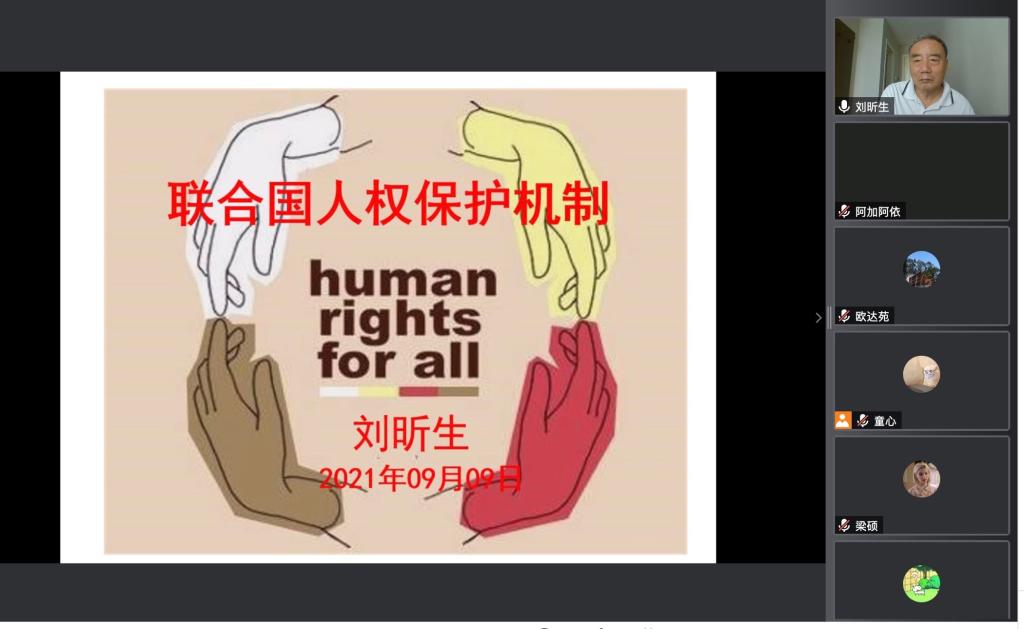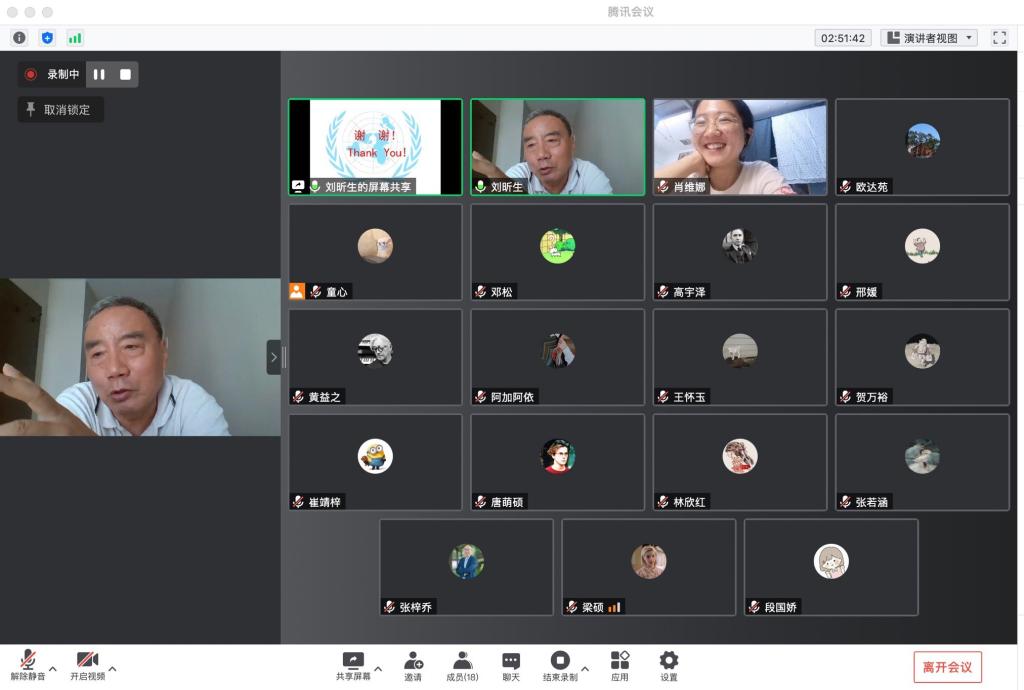Liu Xinsheng:Human Rights Protection Mechanisms of the United Nations
On the morning of September 9, 2021, the Global Forum on Human Rights lecture series was held online. Liu Xinsheng, a former Chinese Ambassador to the Republic of Cyprus and now a human rights expert on the Advisory Committee of the United Nations Human Rights Council, gave a lecture to teachers and students of Institute for Human Rights (IHR) on the theme of "Human Rights Protection Mechanism of the United Nations". This lecture was hosted by Professor Zhang Wei, Co-director of IHR of China University of Political Science and Law.

As an opening statement, Ambassador Liu introduced the main elements of the lecture, including the emergence and reform of the United Nations Commission on Human Rights, the current state of the Human Rights Council and the Office of the United Nations High Commissioner for Human Rights (OHCHR).
First of all, Ambassador Liu recalled the history of the establishment of the United Nations Commission on Human Rights. On October 24, 1945, the Charter of the United Nations came into force, and the United Nations was formally established. Then the concept of human rights appeared international relations and the international area for the first time. In February 1946, under Article 68 of the Charter of the United Nations, "The Economic and Social Council shall set up commissions in economic and social fields and for the promotion of human rights", the United Nations Economic and Social Council established the Commission on Human Rights. After that, United Nations human rights protection activities followed, as evidenced by the Commission on Human Rights, which was responsible for drafting international human rights instruments and developing international human rights standards. In December 1948, the United Nations General Assembly adopted the Universal Declaration of Human Rights, drafted by the Commission on Human Rights, which, together with the International Covenant on Economic, Social and Cultural Rights and the International Covenant on Civil and Political Rights, adopted in December 1966, constitutes the International Bill of Human Rights. Since then, the practice of international human rights protection has developed towards three directions: namely, the establishment of regional protection mechanism in human rights field, the protection mechanism based on convention, the protection mechanism based on the Charter of the United Nations.
Secondly, Ambassador Liu described the United Nations Commission on Human Rights and its reform. As the first functional commission of the Economic and Social Council, the Commission on Human Rights has made positive contributions, such as the development of international human rights conventions, the promotion of human rights practices, the provision of international forums on human rights and the introduction of new human rights concepts. However, after 60 years of development, it has been in six dilemmas: unreasonable membership, excessive concentration of meeting time, proliferation of issues, confusion in the participation of high-level representatives, high degree of politicization and confrontation, and its level does not adapt to reality, which made it unsustainable and concluded its work in 2006. In the same year, the United Nations General Assembly adopted resolution 60/251 and decided to establish the Human Rights Council. As a result, the composition of the Human Rights Council has become more reasonable, the duration of its sessions has been made more flexible, the issues have been simplified, the functioning has become smooth, the level has been raised and the universal periodic review has been developed. Among them, the universal periodic review is highlighted, which is a working mechanism and procedure of the Human Rights Council, considering the human rights records of all United Nations members. China has always supported the work of the United Nations in the field of human rights, participated in all activities in various fields and played an active role in promoting it.
Finally, Ambassador Liu introduced the OHCHR. Pursuant to the resolution of December 20, 1993 of the 48th United Nations General Assembly, OHCHR was established to coordinate activities in the field of human rights under the authority of the Secretary-General of the United Nations. With regard to the nature of OHCHR, Ambassador Liu mentioned that it was the center of movement of United Nations human rights activities and was in fact the secretariat of the Human Rights Council, human rights treaty bodies and other United Nations human rights bodies. Further, Ambassador Liu expressed his view of OHCHR as a "naked general", a "lone commissioner" and a "historical choice". Referring to the assessment of the international community, Ambassador Liu said that the High Commissioner for Human Rights was a coordinator and leader in the coordination and leadership of international human rights activities, protecting and promoting human rights and fundamental freedoms for people all over the world. Ambassador Liu concluded by mentioning that OHCHR was funded from the regular budget and voluntary contributions of the United Nations, which were divided into earmarked and non-earmarked contributions. After that, he provided a brief overview of previous High Commissioners.

This lecture was successfully ended with a warm applause from the students!
Written by Liang Shuo